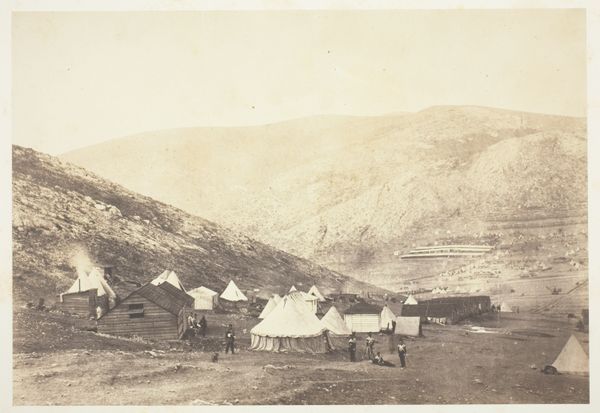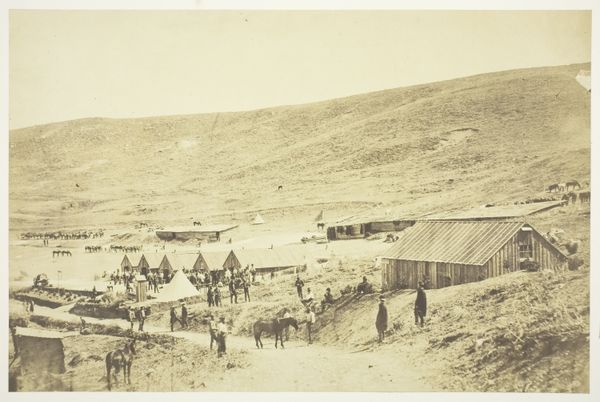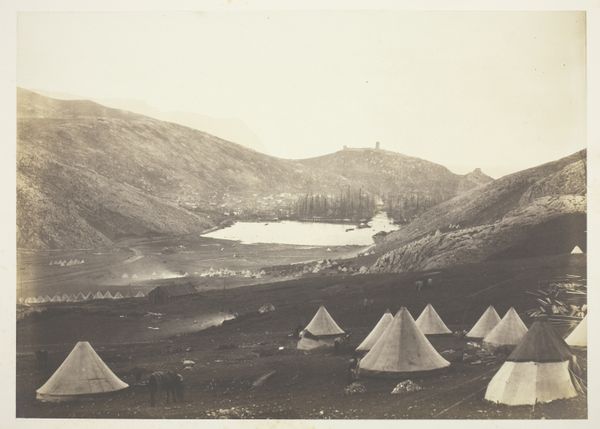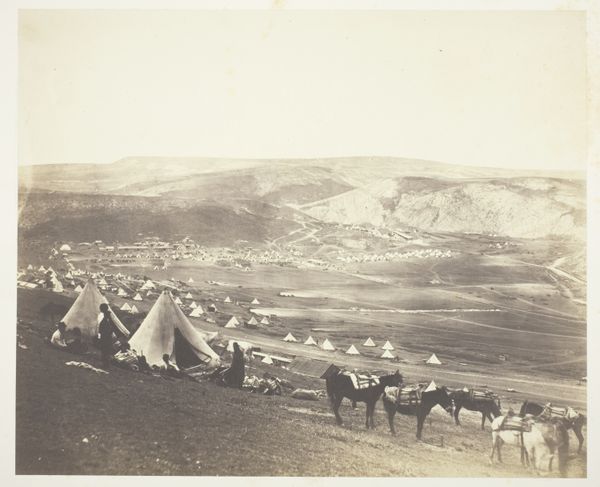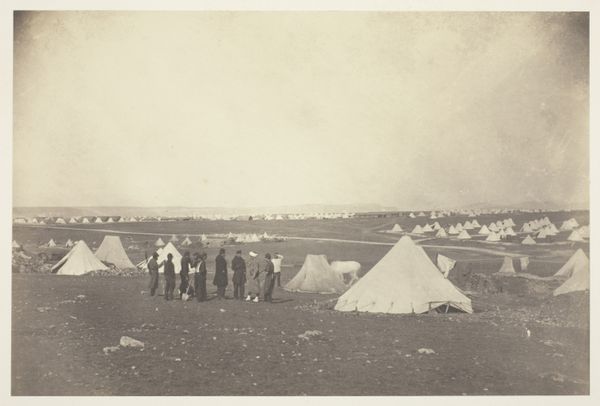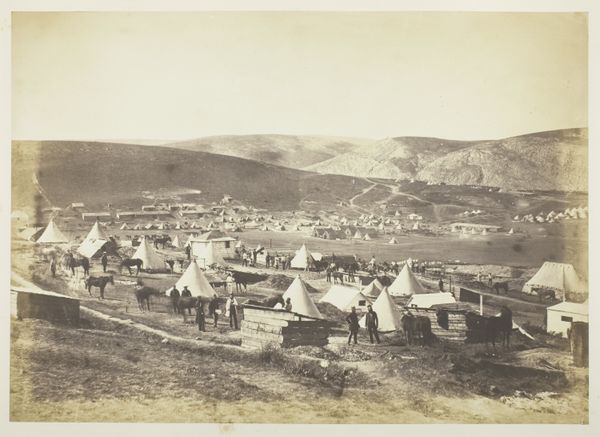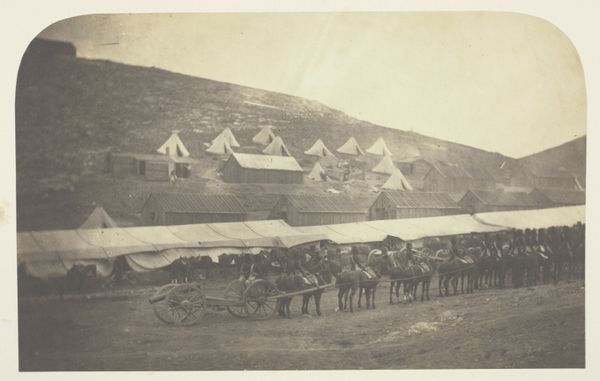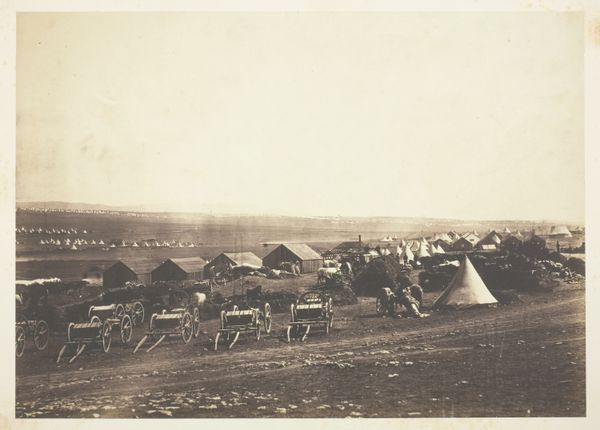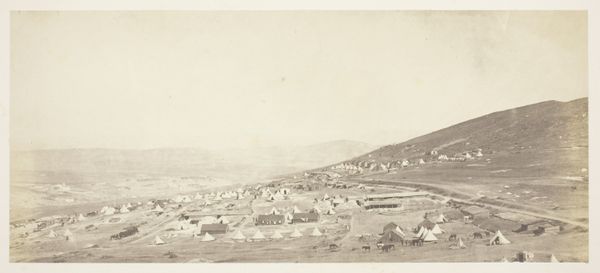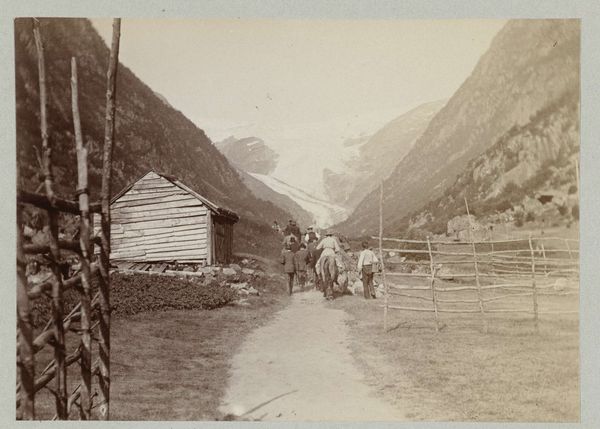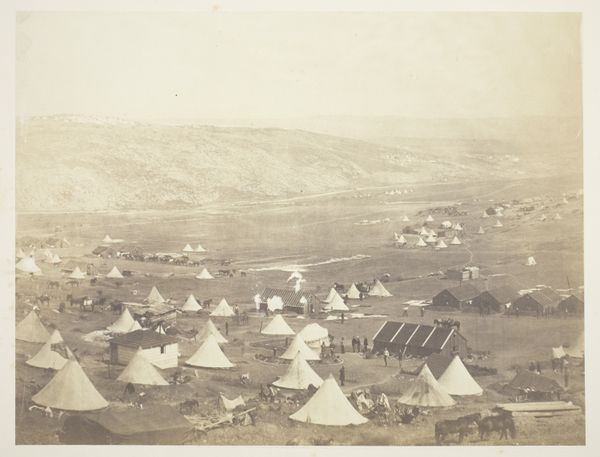
Dimensions: 13.1 × 16.7 cm (image/paper); 40.5 × 53.1 cm (mount)
Copyright: Public Domain
Editor: So this gelatin-silver print, "Camp of the 4th Dragoon Guards, near Karyni" by Roger Fenton, made in 1855, has such a muted and melancholic tone. Considering it depicts a war scene, the desaturated colors and focus on landscape feel almost… peaceful. What do you make of this contrast? Curator: That’s an excellent observation! What strikes me is Fenton's seemingly detached gaze on the Crimean War. Instead of glorifying battle, he presents a somewhat mundane scene of military life. But, consider: Who benefits from this romanticized view? Is Fenton complicit in masking the brutal realities of war for a British public eager for heroic narratives? Editor: That's a powerful point. I hadn't considered who *wasn't* being represented. Were other photographic accounts more focused on the casualties? Curator: Exactly. Official war photography of that era was often carefully constructed. Ask yourself, whose stories are omitted in this seemingly neutral landscape? Where are the perspectives of the local populations impacted by the conflict or the ordinary soldiers who faced immense suffering? Think about how class structures might have influenced access and control in photographic narratives of war. Editor: So, Fenton's artistic choice—to focus on the landscape and a seemingly organized camp—potentially normalizes the occupation, downplaying the true cost of the conflict? Curator: Precisely. This photo prompts a critical engagement with visual culture and the way photography has historically shaped public understanding – and misunderstanding – of war and its human consequences. It makes you wonder whose perspectives we are still missing today. Editor: I hadn’t really considered the political dimensions of landscape photography before. This gives me so much to think about regarding visual representation and historical narratives. Curator: That's the goal. To look critically at art's relationship to power, identity, and social justice.
Comments
No comments
Be the first to comment and join the conversation on the ultimate creative platform.
